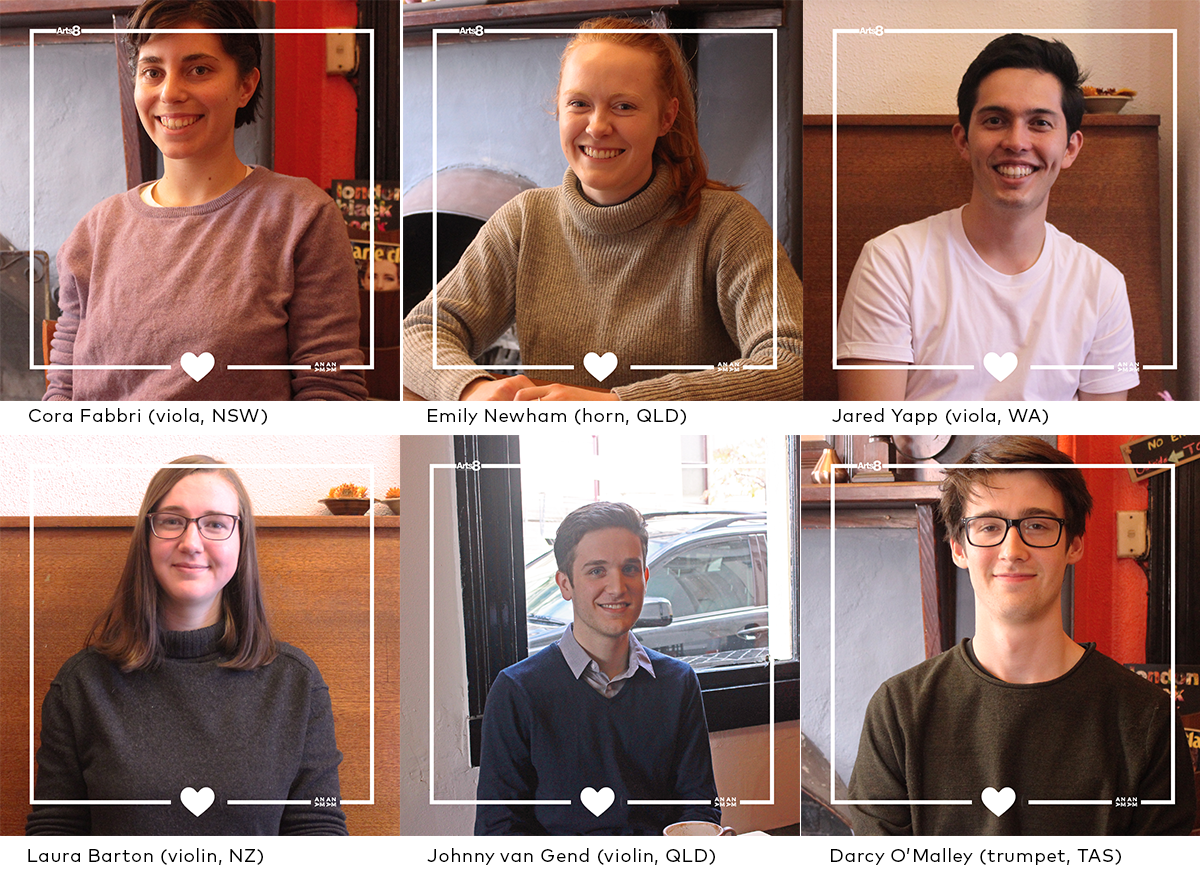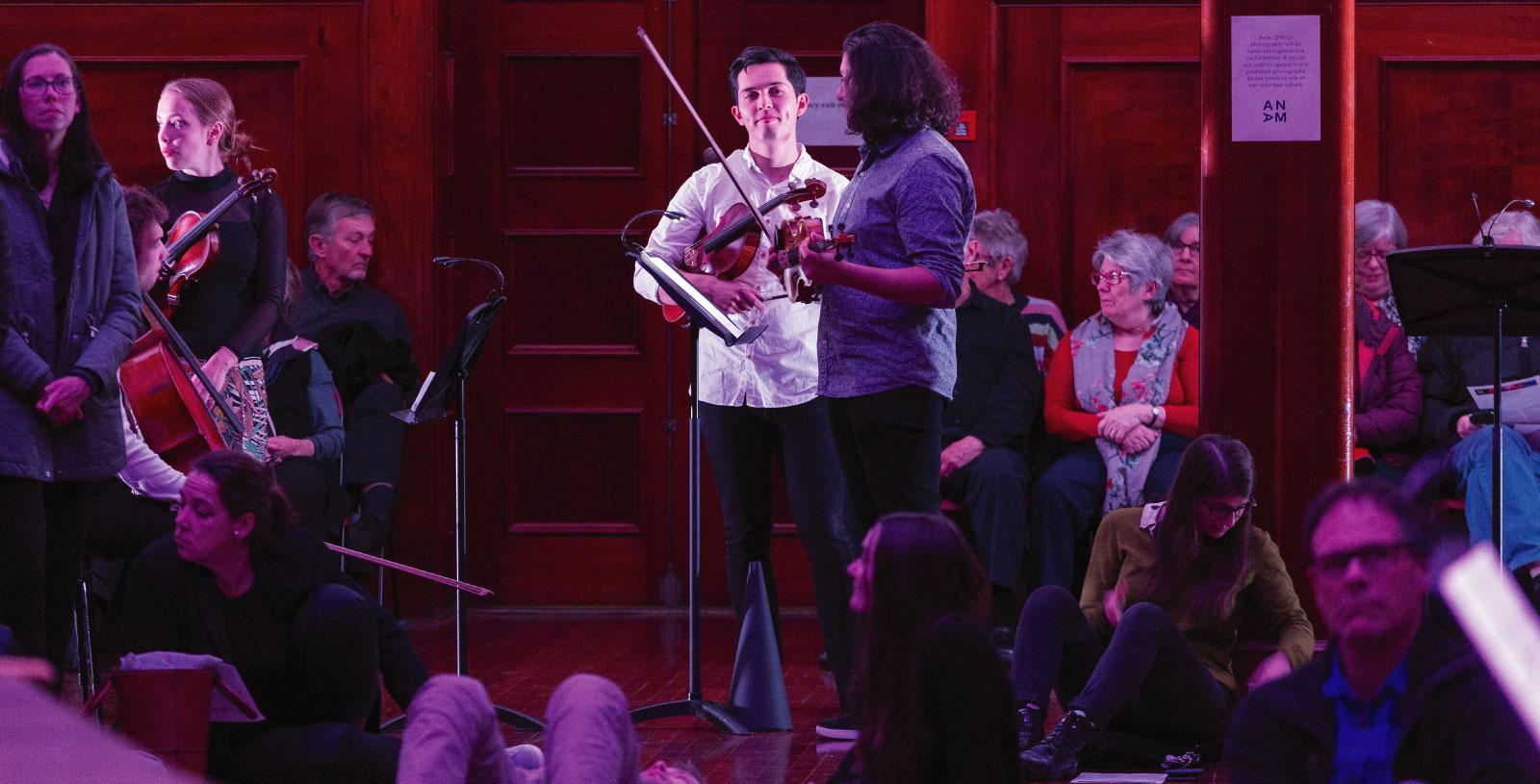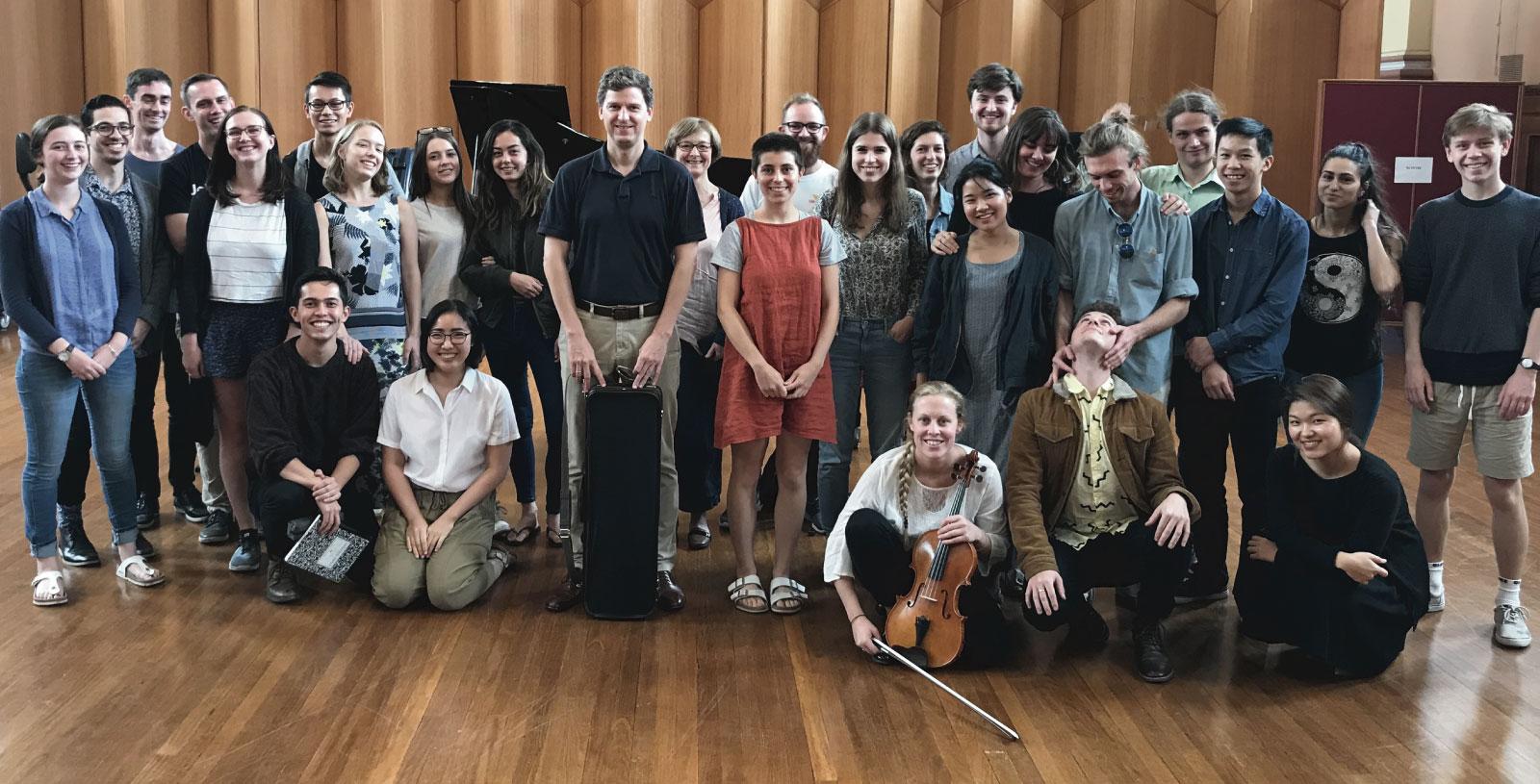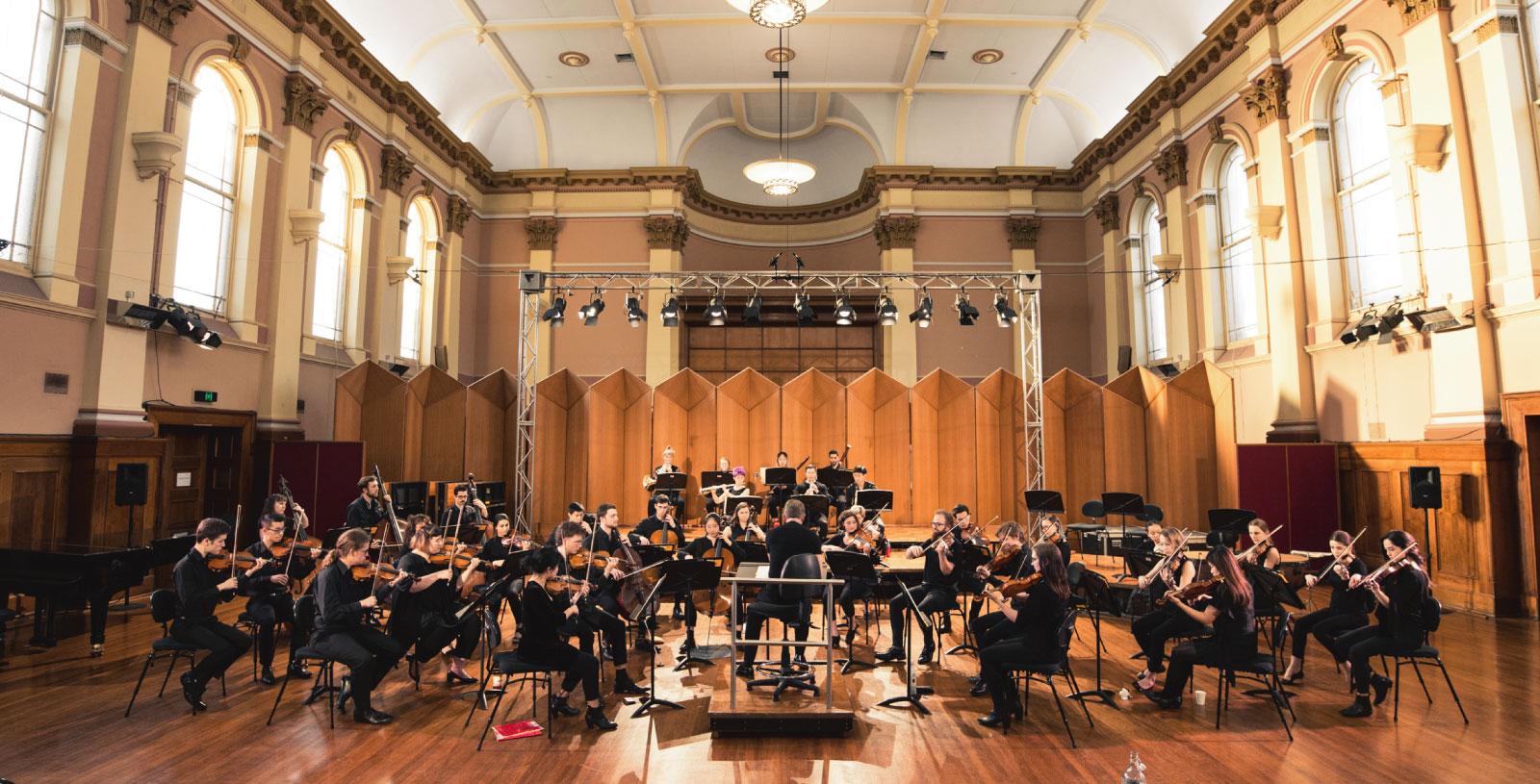Our musicians participate in performance-based training with multiple opportunities to present and prepare concerts and events. The program is structured so that musicians can internalise the idiom and syntax of each piece and discover their own strengths. Second year musicians Jared Yapp (viola) and Cora Fabbri (viola) discuss how they are finding their niche in the classical music scene through their experience at ANAM.
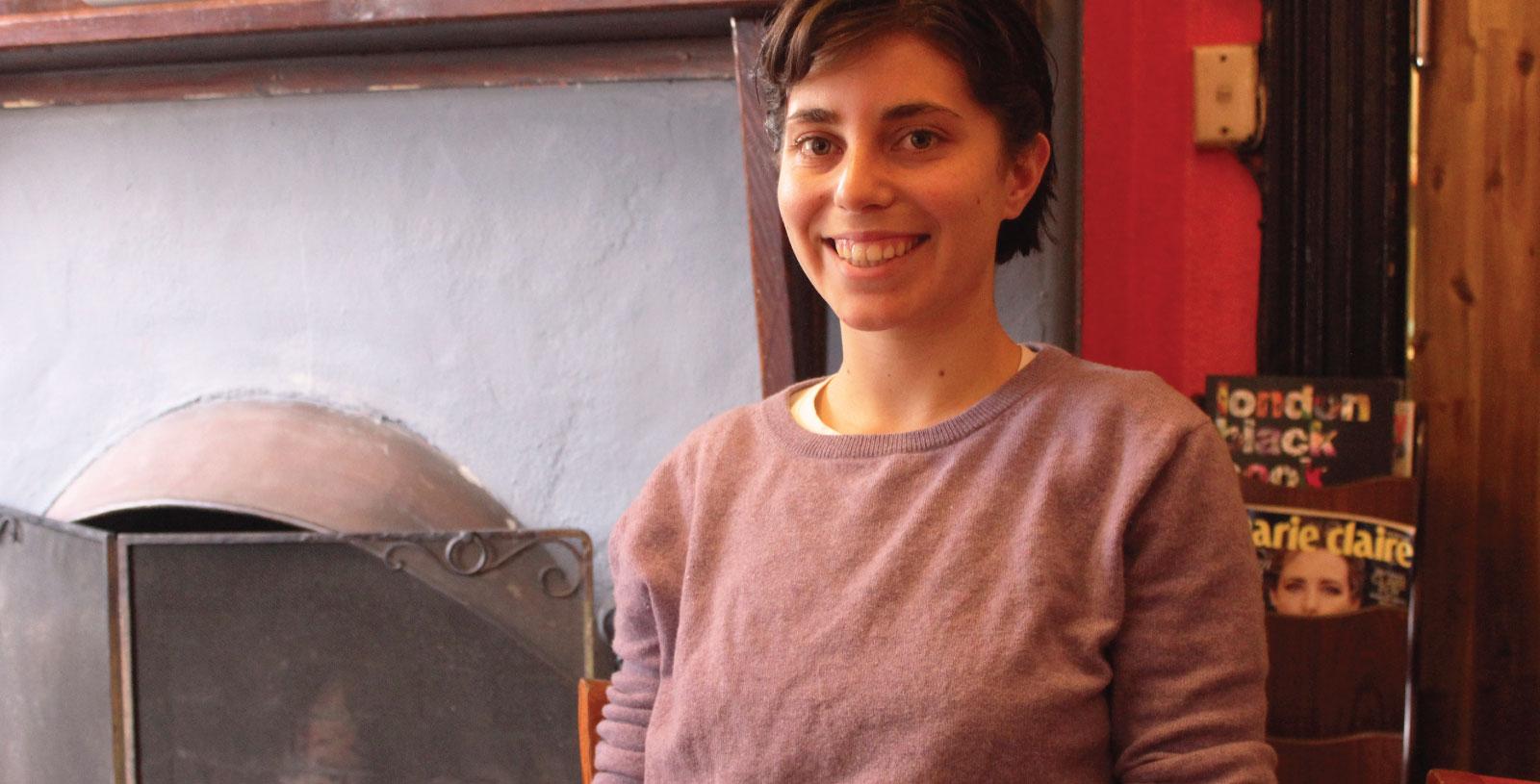
A Changing View
According to Jared, the most valuable lesson he learnt is that everyone has their own journey, and you must find your own path.
Jared: Everyone comes to ANAM with different strengths and weaknesses, and their own idea of what they want to achieve during their time here. Part of what makes ANAM interesting is finding common ground in which you can learn from each other, and also being able to take joy in other people’s success without allowing it impact your own development. You need to be able to say ‘I’m thrilled for that person, but that’s not my journey’.
Cora adds that there are a lot of surprises when starting at ANAM including a sense of freedom to pick and choose training pathways and performance opportunities.
Cora: I was a little bit surprised; I didn’t know what to expect. It’s not a university here so you have to figure out with your teacher what works best for you day-to-day and for longer term goals.
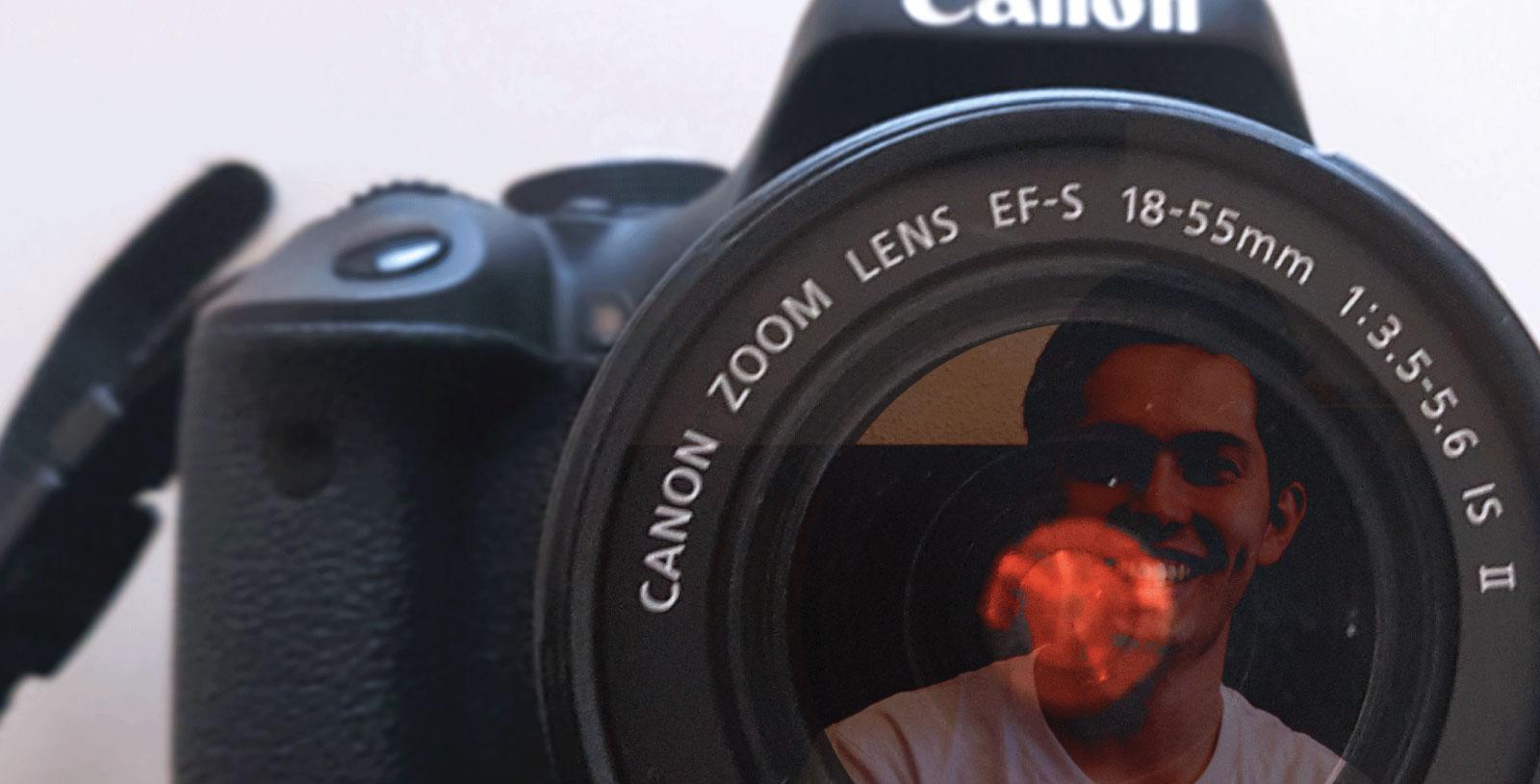
Reaching for a Higher Standard: On Stage with Orchestral Idols
Cora had already developed a degree of independence and maturity as a musician before coming to ANAM. Her first “big move” was from her home in Canberra to Sydney, in order to study at the Sydney Conservatorium of Music; since then, she has been an exchange student at the Royal Academy of Music in London, and has performed internationally in Verona and Quebec.
At the same time, Cora admits that her life at ANAM has developed a rhythm of its own that’s different from her university days.
Cora: When there’s an orchestral performance coming up, you have one big project week where you rehearse every day, and then you have a concert. There’s more fluctuation between really busy times and more chilled out times. I had an audition on Monday, so I’ve been taking it easy this week. But you can have a full day of classes and rehearsals and have to fit in practice in between.
The biggest difference between the recitals at ANAM and the final recital at uni is that there are so many opportunities to perform while at ANAM. When you are at uni, you may do one or two performances, and one big recital at the end of the year that’s very scary because you feel like you have a lot resting on it, and you get a mark – [the mark makes] you think, “is that how good I am?” At ANAM, you are always doing performances. Your recital is just a longer one, and you get written feedback that’s just like the feedback you get from a performance class.
So over all, I’ve found the recitals less stressful than at uni. I think it depends a lot on who your teacher is as well; mine gives her students a lot of freedom to explore whatever kind of crazy programming we feel like!
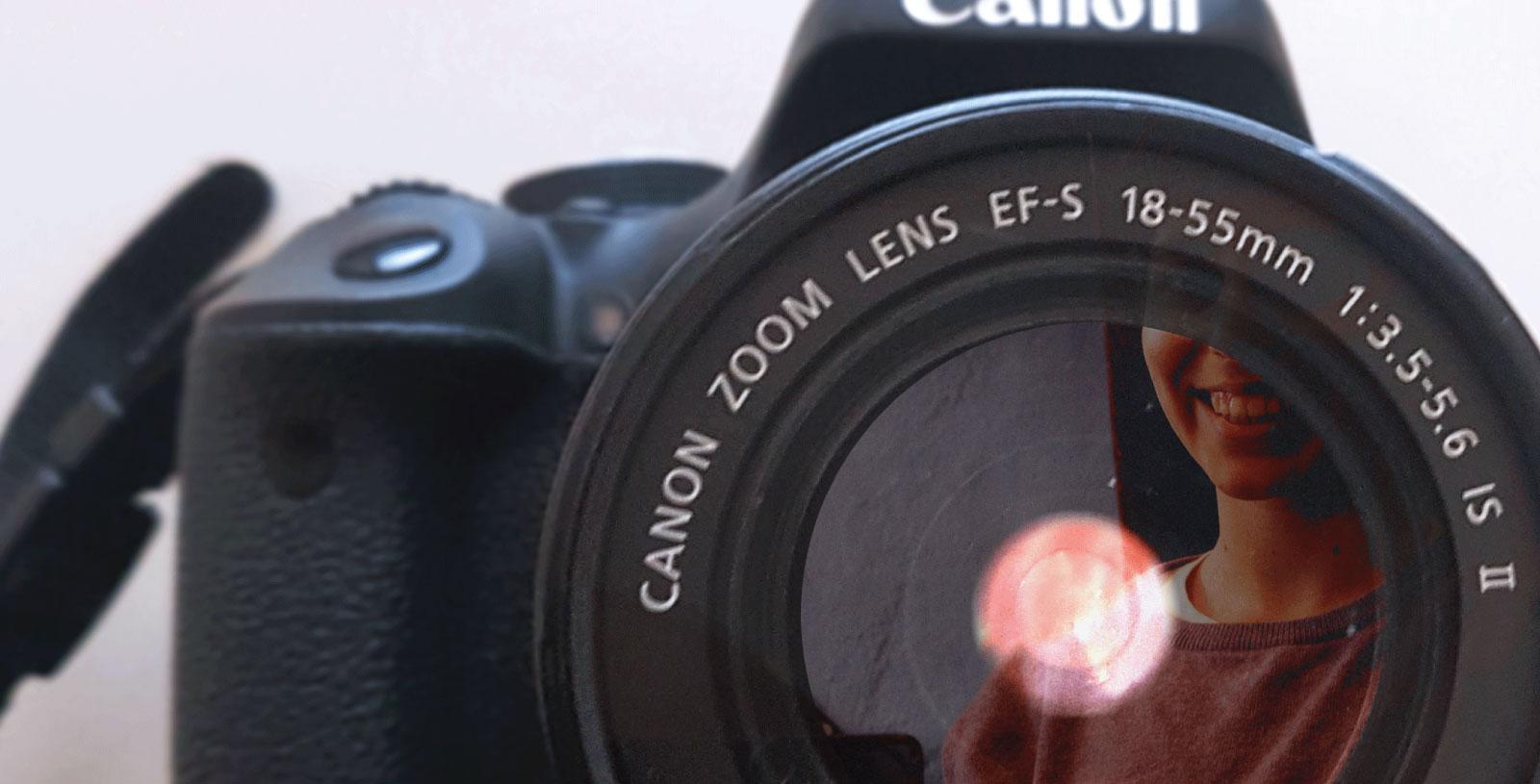
Cora recalls two “massive highlights” from last year. The first one is Images [Book 1], in which she played Debussy’s Sonata no 2 for flute, viola and harp with Cassandra Slater (flute) and guest artist Marshall McGuire. The event was part of ANAM’s commemoration of Debussy’s centenary, and Australian composer Lyle Chan was commissioned to fulfil Debussy's original mission of composing Six Sonatas for diverse instruments.
Cora: I put so much work into it, and Cassie and Marshall were so great; it was a proper public performance, and it was on radio as well – it was so different from an exam or recital.
The other one was playing a Shostakovich Chamber Orchestra concert with Lawrence Power, who’s one my viola idols and one of the most famous viola soloists in the world right now. He was concertmaster and I was leading the viola section so it was a really special program for me.
Lawrence Power: Shostakovich was the event Lawrence curated for his first residency at ANAM, and the event showcased his skills on both the viola and the violin. Cora says it was a great experience to share the stage with someone she’d seen on stage and idolised.
Cora: I remember being younger and thinking ‘I wish I could learn music like this all the time’, and that’s what I do now!
Choose Your Own Journey: Collaborative, Immersive, and Often Experimental
Jared is not only an accomplished violist, but also a composer who’s passionate about finding ways to innovate the classical music genre. For this reason, Jared says he enjoyed his role as an Artistic Partner for ANAM’s recent concert, Ten Thousand Birds.
Jared: For me, the most fulfilling projects I’ve been involved in have been ones like Ten Thousand Birds, where I’ve been able to collaborate with people in all parts of the performance-making process, from performers to back-of-house teams. I think the most successful collaborations are ones in which there is some give and take, and where the outcome is directly affected by the artistic motivations of everyone involved. The performance should look and feel different depending on who is involved. I’m very lucky to be a member of the Ad Lib Collectivehere in Melbourne, and whenever we create a performance we always do so with communication and collaboration at the front of our minds.
The Ad Lib Collective consists of four musicians whose aim is to connect with their audience through performance: Thea Rossen, ANAM Alumna and percussionist; Hamish Upton, ANAM Alumnus and percussionist; saxophonist Jesse Deane; and Jared. Last year, the Ad Lib Collective curated and performed ‘Music for Our Changing Climate’as part of the Metropolis New Music Festival.
Soon after starting at ANAM, Jared said that he was “looking forward to having the support and time to tackle some of my personal demons in my approach to music.” This year, Jared is ready to share some of that journey.

Classical musicians face the dual challenge of being timeless and remaining relevant at the same time; being idealised, and being real.
Jared: I’ve been recently thinking about the way in which classical musicians are asked to inhabit two very contrasting worlds: the Romantic and the Post-modern/present day. The current view of the classical music world, as it is widely seen by society, was really shaped and codified in the eighteenth and nineteenth centuries. At that time there was an idea that performers and composers should be these god-like figures, incapable of failure and always profoundly inspired. Now, as a society we are much more interested in people’s personal stories, how their journeys have been peppered with failure as much as success. So when we get up on stage, as performers and/or composers, there’s a weird pull to live up to this romanticised persona, where mistakes are sins. Then, when we leave, we’re suddenly back in the present day where that’s not really relevant anymore. Personally, I find this dichotomy very difficult to navigate sometimes.
I love talking about these issues with my teacher, Caroline Henbest, who is always willing to indulge me in these discussions. We are so lucky to have her on faculty at ANAM not only because she is a fantastic player, but because she always brings her whole self to every lesson and class she teaches. She speaks about her weaknesses as much as her successes and, in doing so, encourages her students to find a way forward through whatever challenge we are currently facing.
One of those challenges is navigating the broad spectrum of musical experience that ANAM provides - we have to move between playing solo, chamber and orchestral music in every genre and format. A few weeks ago, I went from playing Bruckner and Beethoven to John Luther Adam’s Ten Thousand Birdswithin two days, and just this week I performed Bach’s B Minor Mass. I’d say that taking advantage of this wide variety of experience, as well as making meaningful connections with other people, is key to getting the most of out of ANAM. Each year goes by so quickly, but the amount of progress you can make during that time is part of what makes ANAM so unique.
We asked our musicians:
Do you have any other advice for ANAM’s first-year musicians?
“If you are moving to ANAM with an intense performance-focused mindset, then you will be fine. Be organised, schedule in concerts and performances early in the semester – get a year planner. Remember to go for walks around the South Melbourne Market, or do whatever it takes to freshen up your mind,” says Johnny. He also recommends making time for the primary school engagement program, for which he ended up writing a song about autumn.
“Take as many opportunities as you can,” Cora advises. “Don’t expect to just come here and do eight hours of practice a day. Get to know people, make time for things that are not related to music: yoga, swimming, running…”
“One of my closest friends at uni started at ANAM a year after me and he was freaking out. I had to sit him down [and say:] ‘write down a list of things you need to do and can’t do; focus on that and forget about the rest.’ Focus on what’s important. Use time wisely. My workload has not decreased over the years. Just the way I manage my time has improved,” says Emily. The ANAM Choir, established by the late Richard Gill AO, is also recommendable. “A lot of us do sing in our practice […]. The horn and cello are two instruments that are closest to the human voice, and singing helps us realise how we want to play and how to breathe.”
“Not everything is going to be handed to you, so make an audience,” is one of Laura’s tips. "Everyone [in the audience] comes here because they love it. They like seeing us do well.” So, it’s important to build a lasting relationship.
Jared concludes that it’s important to do what’s right for you. Take opportunities whenever you can towards achieving your goals.
